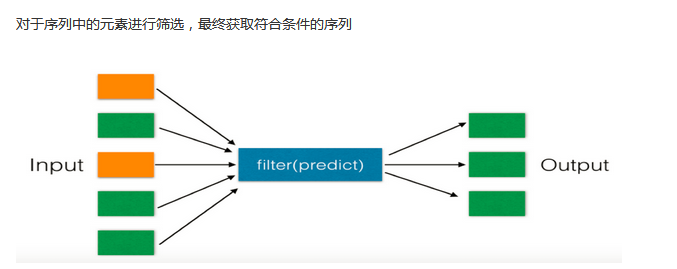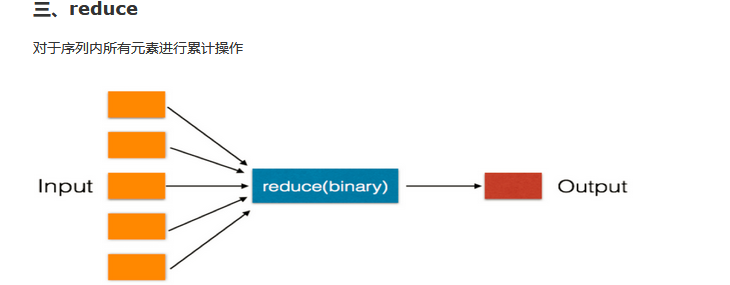1、函数参数,引用
2、lambda表达式
lambda表达式

1 f1 = lambda a1,a2: a1+a2
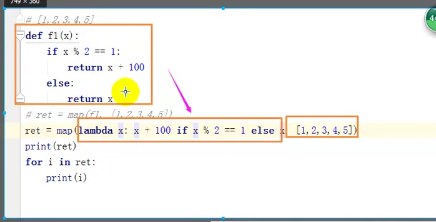
3、python的内置函数
abs(),绝对值
all(),循环参数,如果每个元素都为真,那么all返回值为真
0是假的,None 是假,“”,[],(),{},空值都是假的
any() 只要有一个是真则为真
ascii(对象),去对象的类中找_repr_,获取返回值
bin(),二进制
oct(),八进制
int(),十进制
hex(),十六进制
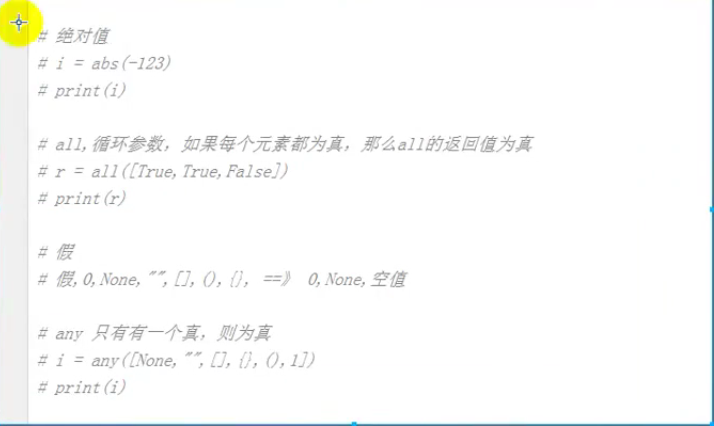
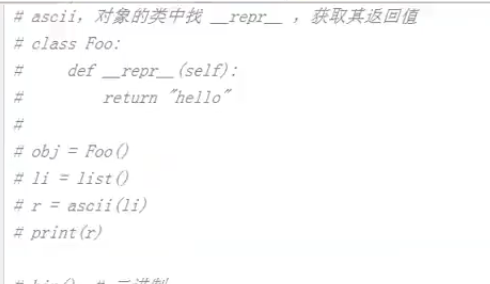
bool(), 判断真假,把一个对象转换成bool值,None,“”,【】,{}
bytes 字节
bytearray 字节列表
字节转字符串
bytes(“xxx”, encoding=‘utf-8’)
chr(),把数字转换成asc码,对应的字符
ord(),把字符转化成数字
实例:生成一个随机验证码

1 #!/usr/bin/env python 2 # -*- coding: utf-8 -*- 3 4 import random 5 6 temp = "" 7 for i in range(6): 8 # 生成0-4的随机数 9 num = random.randrange(0, 4) 10 # 如果随机数是1或3,那么就在验证码中生成一个0-9的随机数字 11 # 否则,验证码中生成一个随机字母 12 if num == 3 or num == 1: 13 rad2 = random.randrange(0, 10) 14 temp = temp + str(rad2) 15 else: 16 rad1 = random.randrange(65, 91) 17 c1 = chr(rad1) 18 temp = temp + rad1 19 print(temp)
callable(),能不能执行
compile(),编译
complex(),
dir(),看看函数提供的功能
divmod(),计算需要多少页

eval(),可以执行一个字符串形式的字符串,有返回值
exec(),执行python代码
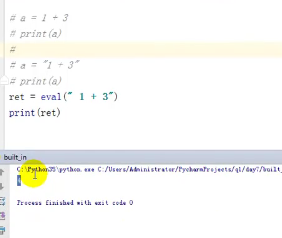
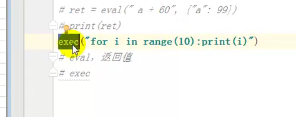
一、 map(函数,可迭代的对象),让所有的数统一做个操作



1 li = [11, 22, 33] 2 3 new_list = map(lambda a: a + 100, li)

1 li = [11, 22, 33] 2 sl = [1, 2, 3] 3 new_list = map(lambda a, b: a + b, li, sl)
二、filter(函数,可迭代的对象),过滤,循环可迭代的对象,获取每一个参数,
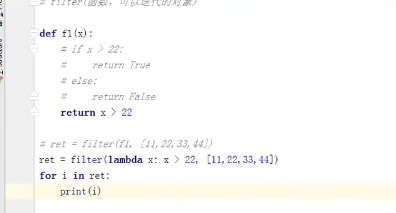

1 li = [11, 22, 33] 2 3 new_list = filter(lambda arg: arg > 22, li) 4 5 #filter第一个参数为空,将获取原来序列


1 li = [11, 22, 33] 2 3 result = reduce(lambda arg1, arg2: arg1 + arg2, li) 4 5 # reduce的第一个参数,函数必须要有两个参数 6 # reduce的第二个参数,要循环的序列 7 # reduce的第三个参数,初始值
format()字符串格式化
globals()获取所有的全局变量
locals()获取所有的局部变量
hash()算哈希值
isinstance(),判断某个对象是否有某个类创建的
issubclass(),是不是子类
open()打开文件
pow(),求指数
repr()====ascii(),
round()四舍五入
silce(),去对象的索引
vars()一个对象有的变量
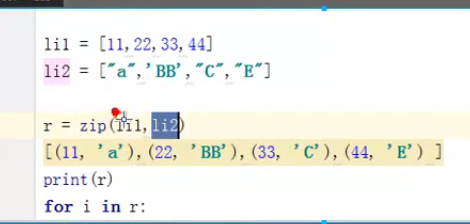
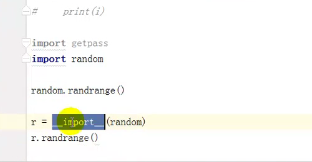

字符串不能排序

1 #!/usr/bin/env python 2 # -*- coding: utf-8 -*- 3 4 li = [1, 2, 22, 333, 444] 5 new_li = sorted(li) 6 print(new_li)

文件操作
一、打开文件
open(文件名,模式,编码)
默认是只读模式
打开文件时,需要指定文件路径和以何等方式打开文件,打开后,即可获取该文件句柄,日后通过此文件句柄对该文件操作。
打开文件的模式有:
- r,只读模式(默认)。
- w,只写模式。【不可读;不存在则创建;存在则删除内容;】
- a,追加模式。【可读; 不存在则创建;存在则只追加内容;】
"+" 表示可以同时读写某个文件
- r+,可读写文件。【可读;可写;可追加】
- w+,写读
- a+,同a
"U"表示在读取时,可以将 \r \n \r\n自动转换成 \n (与 r 或 r+ 模式同使用)
- rU
- r+U
"b"表示处理二进制文件(如:FTP发送上传ISO镜像文件,linux可忽略,windows处理二进制文件时需标注)
- rb
- wb
- ab

以字节的方式打开
1、只读 rb
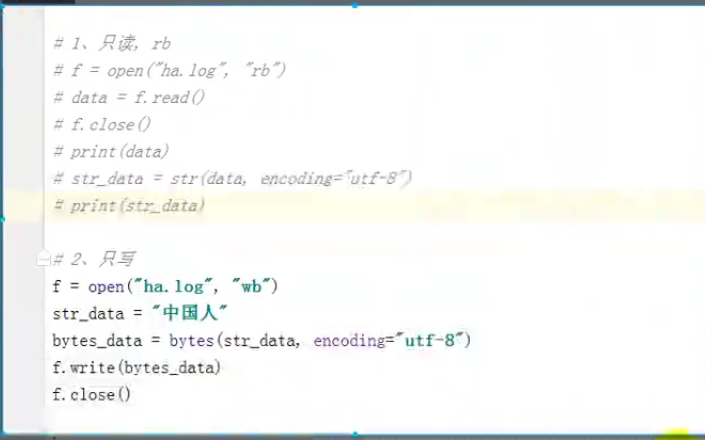

二、操作文件

1 class file(object): 2 3 def close(self): # real signature unknown; restored from __doc__ 4 关闭文件 5 """ 6 close() -> None or (perhaps) an integer. Close the file. 7 8 Sets data attribute .closed to True. A closed file cannot be used for 9 further I/O operations. close() may be called more than once without 10 error. Some kinds of file objects (for example, opened by popen()) 11 may return an exit status upon closing. 12 """ 13 14 def fileno(self): # real signature unknown; restored from __doc__ 15 文件描述符 16 """ 17 fileno() -> integer "file descriptor". 18 19 This is needed for lower-level file interfaces, such os.read(). 20 """ 21 return 0 22 23 def flush(self): # real signature unknown; restored from __doc__ 24 刷新文件内部缓冲区 25 """ flush() -> None. Flush the internal I/O buffer. """ 26 pass 27 28 29 def isatty(self): # real signature unknown; restored from __doc__ 30 判断文件是否是同意tty设备 31 """ isatty() -> true or false. True if the file is connected to a tty device. """ 32 return False 33 34 35 def next(self): # real signature unknown; restored from __doc__ 36 获取下一行数据,不存在,则报错 37 """ x.next() -> the next value, or raise StopIteration """ 38 pass 39 40 def read(self, size=None): # real signature unknown; restored from __doc__ 41 读取指定字节数据 42 """ 43 read([size]) -> read at most size bytes, returned as a string. 44 45 If the size argument is negative or omitted, read until EOF is reached. 46 Notice that when in non-blocking mode, less data than what was requested 47 may be returned, even if no size parameter was given. 48 """ 49 pass 50 51 def readinto(self): # real signature unknown; restored from __doc__ 52 读取到缓冲区,不要用,将被遗弃 53 """ readinto() -> Undocumented. Don't use this; it may go away. """ 54 pass 55 56 def readline(self, size=None): # real signature unknown; restored from __doc__ 57 仅读取一行数据 58 """ 59 readline([size]) -> next line from the file, as a string. 60 61 Retain newline. A non-negative size argument limits the maximum 62 number of bytes to return (an incomplete line may be returned then). 63 Return an empty string at EOF. 64 """ 65 pass 66 67 def readlines(self, size=None): # real signature unknown; restored from __doc__ 68 读取所有数据,并根据换行保存值列表 69 """ 70 readlines([size]) -> list of strings, each a line from the file. 71 72 Call readline() repeatedly and return a list of the lines so read. 73 The optional size argument, if given, is an approximate bound on the 74 total number of bytes in the lines returned. 75 """ 76 return [] 77 78 def seek(self, offset, whence=None): # real signature unknown; restored from __doc__ 79 指定文件中指针位置 80 """ 81 seek(offset[, whence]) -> None. Move to new file position. 82 83 Argument offset is a byte count. Optional argument whence defaults to 84 0 (offset from start of file, offset should be >= 0); other values are 1 85 (move relative to current position, positive or negative), and 2 (move 86 relative to end of file, usually negative, although many platforms allow 87 seeking beyond the end of a file). If the file is opened in text mode, 88 only offsets returned by tell() are legal. Use of other offsets causes 89 undefined behavior. 90 Note that not all file objects are seekable. 91 """ 92 pass 93 94 def tell(self): # real signature unknown; restored from __doc__ 95 获取当前指针位置 96 """ tell() -> current file position, an integer (may be a long integer). """ 97 pass 98 99 def truncate(self, size=None): # real signature unknown; restored from __doc__ 100 截断数据,仅保留指定之前数据 101 """ 102 truncate([size]) -> None. Truncate the file to at most size bytes. 103 104 Size defaults to the current file position, as returned by tell(). 105 """ 106 pass 107 108 def write(self, p_str): # real signature unknown; restored from __doc__ 109 写内容 110 """ 111 write(str) -> None. Write string str to file. 112 113 Note that due to buffering, flush() or close() may be needed before 114 the file on disk reflects the data written. 115 """ 116 pass 117 118 def writelines(self, sequence_of_strings): # real signature unknown; restored from __doc__ 119 将一个字符串列表写入文件 120 """ 121 writelines(sequence_of_strings) -> None. Write the strings to the file. 122 123 Note that newlines are not added. The sequence can be any iterable object 124 producing strings. This is equivalent to calling write() for each string. 125 """ 126 pass 127 128 def xreadlines(self): # real signature unknown; restored from __doc__ 129 可用于逐行读取文件,非全部 130 """ 131 xreadlines() -> returns self. 132 133 For backward compatibility. File objects now include the performance 134 optimizations previously implemented in the xreadlines module. 135 """ 136 pass

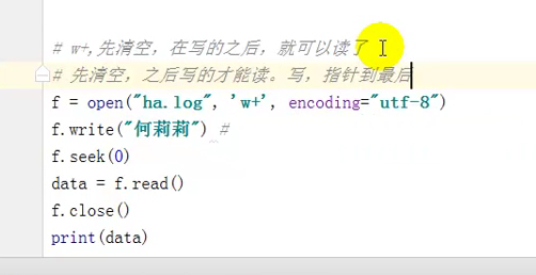
 ‘
‘
f.tell()# 获取指针的位置
f.seek(num)#调整指针的位置
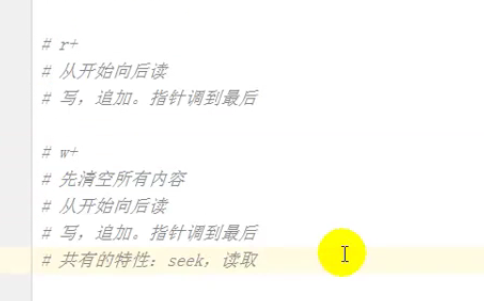
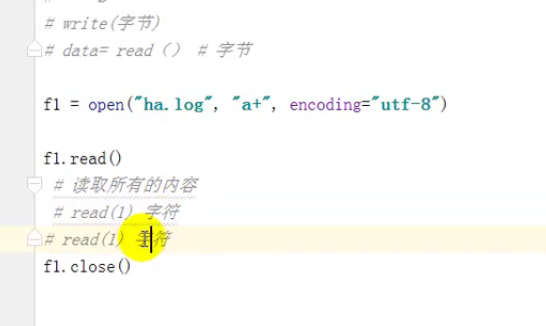
truncate()截取数据,仅保留指定之前的数据
要掌握的内容
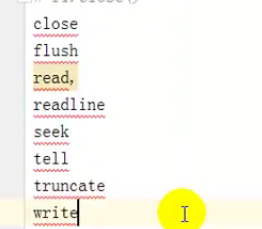
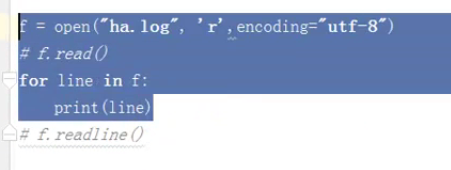
三、关闭文件


1 with open('log','r') as f: 2 3 ...

自动关闭
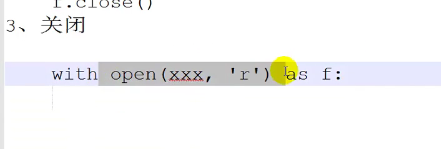
with支持同时打开两个文件



